Good news everyone: October’s sales resulted in the biggest orders of the Diamond Comic Distributors era, a record that was only three months old. Coming on the heels of a first quarter that had many – not myself, but many – wondering whether or not the industry was going to finally regress from its three-year boom, this is nothing but fantastic news, and news that is great for everyone involved with the industry.
This boom period has drawn out a hefty amount of skeptics all along, waiting for the other shoe to drop, but most indicators show an industry that is performing both at a high level and an arguably sustainable one. But why is that?
In the past, boom times often coincided with traditional drivers of comic sales. In the past, that meant big Marvel and DC events finding retailers up their orders so their readers can stay in the know on what’s next and what’s new for their favorite heroes. When I was a kid, for example, you couldn’t have told me that there was another comic running during the X-Men event “Age of Apocalypse”, and the charts have a hard time disagreeing with that.
Even more recently, you would find “House of M” #1 and “Infinite Crisis” #1 opening in 2005 to sales levels that are rarely met in today’s industry, with both surpassing 230,000 copies ordered. Comics were top heavy, and when those books didn’t have explosive debuts – like 2010’s “Siege” #1 – the industry as a whole would suffer.
In 2014, the story has changed.
Sure, events still do fairly well, but they’re an element of an overall whole rather than the barometer by which you judge the industry’s health by. Possibly more than ever, we’re seeing retailers and consumers embrace not just the tried and true, but what’s new. There’s a greater balance, and a rising lower to middle class that creates that sustainability I spoke of earlier, thanks to a vastly improved sales floor and ceiling.
But there are indicators everywhere that say that things could be better, if a certain pair of publishers would rethink their approach a little bit. Let’s take a look and see what’s driving that overall growth, and explore the weaknesses that are still keeping the comic industry at suboptimal levels.
The Old Guard
Before we get into the bad, let’s look at the good. Marvel and DC continue to be the backbone of the industry. In October, the pair combined to account for over 67% of units shipped by Diamond, and they are and will continue to be the 800-pound gorillas that comics are mostly known for. Some often wish they would just go away, but they aren’t just necessary, they’re the absolute foundation of the livelihood of comics. With them gone, it would likely be difficult to impossible for the books you love to succeed or even exist.
What do I mean by that? Well, it’s pretty simple. In an industry that’s worth $50 million on average, DC and Marvel account for two thirds of that revenue. Without them, comic shops would have a hard time making enough money to survive. Without Marvel and DC, print comics would likely die just like the doomsayers are always saying they’re about to. In that way, Marvel and DC’s success is tantamount to the health of the industry, and we’ve seen them reach enormous heights in recent years.
But that doesn’t mean they couldn’t be better.
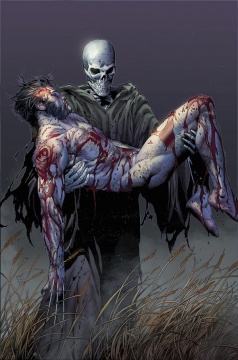
In short, event comics are a pretty big deal when it comes to the industry reaching the heights they have.
But while they undoubtedly were industry leaders for performance, here’s where I let you into a dark secret: event fatigue is a very real thing, and these books have been an increasingly reduced factor in the industry’s turnaround and growth.
Why do I say that? Well, as I said, the industry is in a boom time, as sales have skyrocketed compared to years past, particularly taking a leap since September 2011 when DC relaunched its entire line with the New 52. For much of that time, comics have seen steady growth in revenues, while event comics and weeklies have went opposite direction, with orders continuing to reduce for both from likely some combination of retailer and consumer disinterest.

This chart above shows the past ten years or so of Marvel event sales, with a trendline layered in to show the direction they’ve been headed (all sales numbers taken from Comichron). In short, they’re headed downwards. Even compared to recent events, “Axis” #1 was an underperformer, only surpassing “Fear Itself” #1 and “Siege” #1 in first issue sales. When you compare it to shooting stars like “Civil War” and “Secret Invasion”, it’s not even in the same ballpark. And that’s just for the first issue of each.

Before I explain that, here’s a quick primer. Diamond’s ordering process requires initial orders from a retailer for a comic to be put in three months ahead of time, with retailers being able to alter that order up or down one last time on final order cutoff (FOC), which is typically three weeks to a month before release.
With the way Marvel released the first three issues of “Axis”, retailers weren’t able to see how the first issue performed before they had to have orders for later issues in, meaning that they were basically ordering on a wing and a prayer. They had no data to say how consumers would respond to the book, which – as we can see in the numbers – resulted in retailers nationwide hedging their bets and ordering low. I imagine future issues will continue to see a relatively steep decline.
Retailer Brian Hibbs of Comix Experience in San Francisco spoke of the difficulties in ordering this book in his recent “Tilting at Windmills” column at CBR:
“’AXIS’ is a nine-issue series, with each issue being $5. These nine issues of ‘AXIS’ come out in just a three-month period. Retailer initial orders for the ninth and final issue of the series are due less than two weeks after the release of issue #1, basically making it impossible to order this series on anything other than a speculative basis.”
In that piece, he spoke of how not only was ordering difficult, but sell-through to customers was as well, sharing that the regular issue of “Uncanny Avengers” (which “Axis” spins out of) performed better than “Axis” #1, which can have deadly ramifications for retailers who bet big on the performance of books like that one.
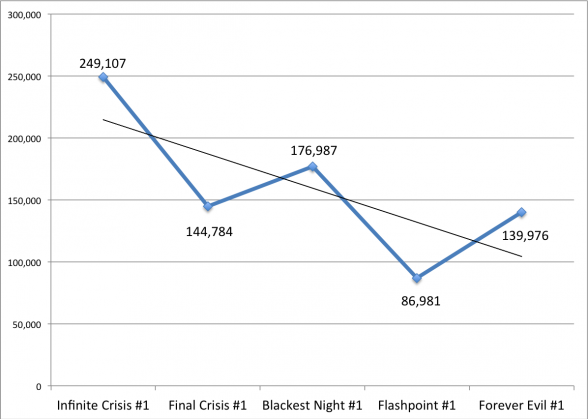
It’s not just Marvel, though.
DC has seen a significant dip in performance over the years, with last year’s “Forever Evil” #1 selling a bit more than half of what “Infinite Crisis” #1 did 8 years before it. Granted, it was way higher than the putrid sales of “Flashpoint”, but I don’t think that’s something to hang DC’s hat on. DC, for one, has been smart about it, as they aren’t pummeling with us events like Marvel does. They’ve kept things to a minimum, only running five true events in the last 10 years.
Continued below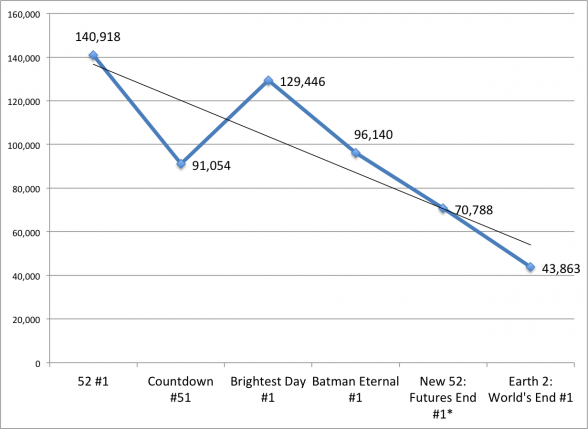
But they sure do love their weeklies (or bi-weeklies, in the case of “Brightest Day”), and with three running right now, DC is seeing lower and lower sales on their debuts with each passing launch. The latest, “Earth 2: World’s End”, opened at a mediocre #57 with about 55% lower sales than “Batman Eternal” started with earlier this year. Anecdotal evidence from retailers have indicated that these books have sold less and less as their runs have went along, and it’s quite likely that DC’s huge bet on weeklies isn’t hitting the levels they were aiming for.
We know that their yearly events in September, like the recent Futures End month, sell well to retailers, but regular readers like you or me? Not so much, as I discovered when talking to an array of retailers for a recent piece.
What does this all mean? There are a few different things you could derive from that information, but my biggest takeaway is this: just doing the same old thing isn’t going to work forever, or at least not in the same way. It might pay off for these old dogs to learn some new tricks.
The Rise of the New
If Marvel and DC’s biggest guns aren’t firing on all cylinders like they used to and the comic industry continues to grow, what’s triggering that growth? Well, it’s not all them, but…
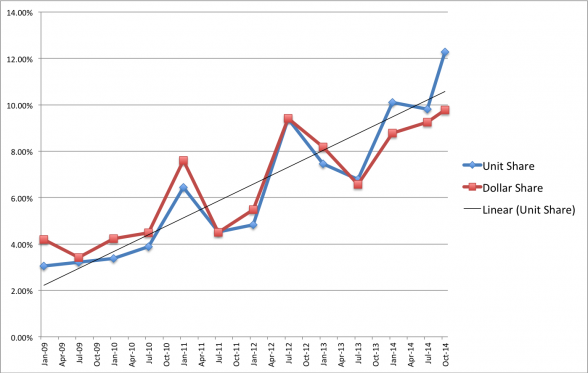
The chart you see above is Image’s growth in both unit share and in dollar share of the marketplace over the past five years. Between January 2009 and October 2014, Image’s unit share in the marketplace has more than quadrupled. And that’s not even an apples to apples comparison, as industry revenues have skyrocketed during that time, moving from $31.31 million in January 2009 to $56.09 million this month. That means Image is taking a bigger slice of a much bigger pie.
Now, this month their 12.28% number is a bit inorganically boosted – as I said before, “The Walking Dead” #132 was featured in October’s Loot Crate, and issue #133 (also in October) sold nearly 80% less without the Loot Crate bump – but that’s still a very impressive number that speaks to how effectively they’ve grown. It’s not even how big they’ve gotten that impresses me the most, though. It’s their Terminator like relentlessness in growing their market share. This wasn’t an overnight thing, but a steady progression.

There are so many other examples of books at Image that are succeeding when they might not have in the past, and that’s helping build that higher sales floor I spoke of earlier. Books like “The Fade Out” and “Birthright” and “The Wicked + The Divine” and “Sex Criminals” and “Low” and “Southern Bastards” and “Rasputin” aren’t just performing well for Image. They’re performing well for any comic.
Readers and retailers aren’t just looking for the same old thing. They’re looking for something new in their comic reading experience, not a rehash of something they’ve read before. And sure, we’ve read stories about zombies and space operas and witches and all of those things before, but not in this way, not in this medium, and not this well, and it’s creating excitement in readers.
It’s not just at Image, though. Other publishers have emulated and adapted Image’s creator-owned direction and seen significant successes because of it. Boom! Studios in particular has found three hit comics in the last year in Grace Ellis, Noelle Stevenson and Brooke Allen’s “Lumberjanes”, James Tynion IV and Eryk Donovan’s “Memetic” and Tynion and Michael Dialynas’ “The Woods”. Dark Horse continues to embrace that direction as well, and books like “B.P.R.D.” and “MIND MGMT” succeed both as monthlies and in trades.
Continued belowAs John Jackson Miller of Comichron has said many a time before:
“The middle-to-lower tier titles are simply stronger relative to times past, and there are more of them.”
That’s a hugely underrated part of where the industry’s growth has come from, and it’s only getting more prominent. In that same link above, he shares my favorite stat of all to show where the growth in comics has come from, but I’m going to adjust it for more current numbers.
In September of 2004, the 300th ranked title sold 1,681 copies.
In September of 2014, the 300th ranked title sold 6,306.
That’s a 375% growth in 10 years. That, my friends, is unbelievable. But that speaks to the depth the comic industry has these days, and it shows exactly how we’ve seen so much growth despite Marvel and DC’s event and weekly comics performing in an increasingly underwhelming fashion. Like with most art forms, comics have become increasingly niche oriented, and readers have moved past just relying on what Marvel and DC gives them and calling it good, instead looking to other publishers and places to find something new and different that speaks to them.

And sometimes, those types of things can even come at Marvel or DC themselves. Look at the successes of the new “Ms. Marvel” book, which topped the October sales charts for graphic novels and trade paperbacks. The monthly book has seen steady and solid numbers since its launch, and is likely now reaching new readers via its first collection. It’s a great comic, and it is proof that if Marvel tries something different – like a comic starring a Muslim girl who isn’t constantly fighting villains – then it might just find an audience, and a potentially sizable one at that.
DC found the same thing in the enormous response the new “Batgirl” creative team and direction brought, as the hype behind it was met with an equal increase in sales. Based off Comichron, the first issue from Cameron Stewart, Brenden Fletcher and Babs Tarr nearly doubled the sales of the last issue of Gail Simone’s run, which is incredible. That’s not to speak poorly of Simone’s well-loved run, but it shows there was an audience who was desperate for something new, and they found it in issue #35.
It just goes to show you that what’s new can take on many different forms, but quite often, if publishers take a chance, they might just find something people will get excited about.
The Past Guiding the Future
Based off of everything I’ve seen, we’re looking at an industry where consumer and retailer behavior is dictating that the old tricks don’t work as well as they once did, and that readers are strongly responding to the fresh and new.
That’s not to say with absolute certainty that if someone releases something completely random – like a comic about a superpowered dude with a ghost cow head working for NASA to stop astronaut farmers – that it will find success (although in that case, Ryan Browne’s “God Hates Astronauts” has done well). Nor am I trying to say that by releasing events and weeklies, Marvel and DC is going to continue to see diminishing returns. There are all kinds of variables that could impact the success of a project beyond what we’re looking at here.
But the face of today’s comic reader is changing, and we all need to change with it. It’s not all 35+ men who read in print, but 18-year-old women who read comics digitally. It’s young girls reading Raina Telgemeier and young boys reading Kazu Kibuishi, or vice versa. It’s people of all varieties reading web comics and digital comics and Kickstarter comics. More than it has been in a long time, the audience of comic books is a moving target, and being agile in trying to find what those readers want is paramount to building readership today. It’s a lesson publishers needs to pay attention to, but as I said before, not everyone is learning from it.
Look at Marvel and DC’s 2015 plans, for example.
Continued below
Marvel for one is running the idea of “Secret Wars” and Battleworld back again, with old events like “House of M” and “Civil War” and more being a part of it. Sure, it’s Jonathan Hickman and Esad Ribic, so it will probably be really interesting, but from our comments and those from Twitter and beyond I can say that the initial response is apathetic. And why wouldn’t it be, as almost every aspect of it is something we’ve seen before.
It’s the same with DC’s “Convergence”, which is a two-month event where DC looks to bring back old favorites like pre New 52 continuity, “Superman: Red Son”, the Wildstorm universe and Tangent (because everyone loved Tangent). It’s going to replace all of their books for that span with 40 new two-issue runs that likely will tackle those different universes and how they’re impacted by this Convergence.
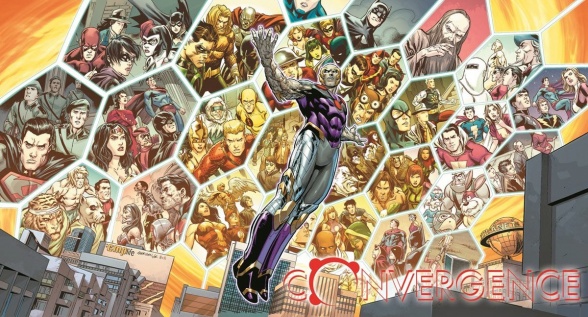
Not only are Marvel and DC building their 2015 fortunes around massive events, but they’re creating something new that is just as obsessed with their past as they are and they hope readers are. Both will likely do well, but not as well as events in the past, especially considering the increase in retailer trepidation when it comes to events clearly built around gaming the system to bolster orders.
Meanwhile, other publishers are embracing change more than ever. Boom! and Dynamite are putting together effective impersonations of Image’s creator-owned direction. Dark Horse is launching a bevy of awesome looking new titles from creators like Jeff Lemire, Matt Kindt, Mike Mignola, and more. Archie has, against all odds, become a bastion of innovative and forward thinking storytelling. Valiant is attempting to bridge the gap between Marvel and DC’s universe building and Image’s creator friendly nature.
Image itself has another of its patented Image Expos arriving in January, and the guests include luminaries who already have books at Image like Lemire, Scott Snyder and Brian K. Vaughan, while also bringing in Image neophytes like Marjorie Liu. They have already announced other books for the year from people like Rick Remender, Sean Murphy, Warren Ellis, Declan Shalvey, and more. The list of writers, artists, colorists, designers and more working at Image is as impressive as the publisher’s growth, proving that not only are readers and retailers enjoying the push to the new and the original, but creators are as well.
It’s things like that which give me hope that these new heights the industry has reached will continue to be sustainable. With more quality titles that feel fresh and exciting, it feels like we’re just reaching the tip of the iceberg when it comes to the future of publishers like Image, Boom! and Dark Horse.
Moving Forward, Looking Forward
There’s always the possibility that readers and retailers may get burned out in relation to those publishers as well. At Multiversity, we’ve seen readers complain about the volume of titles Image is releasing, and they did have 72 comics ship in October (which is only 22 less than Marvel did). But if these publishers continue to churn out comics of value, there’s a good chance they’ll find an audience with the way everything is trending. After all, there are worse things in the world than new comics that are also good.
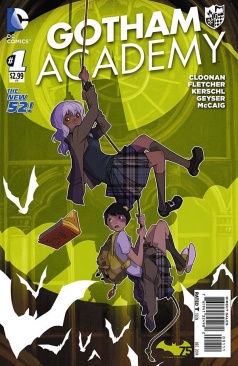
The good news about all of this is from all of the data I’ve looked at, something we’ve always impressed on readers is actually happening, in that when you’re buying comics, you’re voting with your dollars. By supporting comics that just aren’t very good, like “Axis” or DC’s “Futures End” month books, you’re telling publishers you want more of that. By supporting something great like “Saga” or “Gotham Academy”, you’re doing the same about those books. Sure, we still have massive events on the horizon, but we also have more “Batgirl”, Lemire and Ramon Perez on “Hawkeye”, and an array of fantastic looking books from smaller publishers. Image’s growth is a perfect example of that, as they are able to publish so many titles because you, the readers, are buying them. It’s working imperfectly, overall, but it’s still working on some level. Or at least it feels like it is.
Continued belowWhen I think of Marvel and DC and where they currently are, my mind goes to what happened to Motorola in the telecommunications industry. Once upon a time, Motorola was the biggest name in telecom, basically printing money with its old flip phone model, the RAZR. Within the old world order of telecom, they were an innovator and an immense success, making billions and billions of dollars in the process. But with the advent of smart phones that were more multi-purpose than strict communications device, Motorola continued to rely upon their tried and true formula until they were so far in the hole they first split into two independent companies, before the mobile device company was sold off to Google and then Lenovo. In the span of four years, Motorola went from the biggest name in the game to yet another cautionary tale because they refused to adapt when market indicators suggested that’s exactly what they needed to do.
Is that going to happen to Marvel or DC? Definitely not. Telecommunications has a lot more room for innovation than comics, and the comic industry’s formula would have to change in an unrealistically radical way for Marvel and DC to falter like Motorola did.
There are still lessons to be learned, though. If Marvel and DC really want to continue to be major parts of the zeitgeist in tomorrow’s comic industry and not just companies subsisting off of what came before, they’ll need to find a way to look to the future without holding on so desperately to the past. For everyone and for themselves, I hope they find a way to do that.
Note: numbers discussed in this piece are for the direct market only, and specifically are in reference to sales from Diamond to retailers, not sell-through to actual readers.






